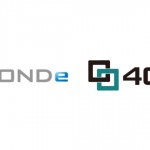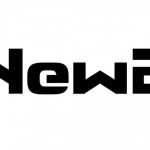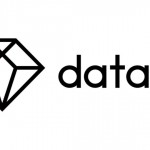Drawbridge、デバイス間ターゲティングツールに向けて
Among the questions mobile marketers are grappling with is whether the channel is an extension of the PC-web or something entirely distinct. Is it better to emphasize some form of behavioral targeting or contextual? Is focusing on location the best way to target mobile users?
While the industry sorts through those issues, mobile ad startup Drawbridge is avoiding them altogether by creating unified profiles of users across their various screens. The two-year-old company, founded by former AdMob machine learning scientist Kamakshi Sivaramakrishnan, is debuting its two new products out of beta: Drawbridge for App Marketing and Drawbridge for Cross Device Marketing. Each uses Drawbridge’s algorithmic technology to connect audiences across devices. So far, Drawbridge claims that over 200 million users have been matched with their devices, and this number is growing by 4 million-plus per day.
KAMAKSHI SIVARAMAKRISHNAN: The genesis of this company starts from my days at AdMob. AdMob continues to be the largest mobile advertising network, and now it’s a part of Google. I joined the AdMob team fairly early on in mid-2007. I would say I grew up with mobile advertising as AdMob was growing and every year was supposed to be “the year of mobile advertising” until AdMob made it much more of a reality.
Through the process, developers and publishers were empowered in a model that very much replicated advertising for mobile the way it was on the web. This was the early days of mobile advertising, so the notion of cookies, etc. on devices were entirely unknown. Heck, nobody even had a smartphone back then. I think when smartphones emerged into the scene, advertising on mobile became much, much more credible. While devices became smarter, mobile advertising wasn’t keeping pace. Having a display ad impression on a banner, on an application, that was considered sexy enough. The targeting was sort of a mixed generation problem. It was a luxury to have and none of the legacy mobile ad networks had quite grasped the targeting problem.
What accounted for that? Was it merely a matter of not having the right technology in place for what was – and largely remains – a nascent medium?
Yes, I think that’s sort of at the heart of the problem, right? Mobile devices just had a sort of simple browser. Cookies were not a reality on a mobile browser on these smartphones. Even when iOS’s and Google Androids exploded and emerged on the scene, networks hadn’t quite adapted to the reality of what is possible with cookies on mobile devices. Of course, an app environment doesn’t quite adapt itself to cookies in the way that a browser does. We needed to have new technology to address that.
Short of that, what do you do? You use the device as a proxy for the audience behind the ad request and then do business as usual. That’s essentially what most of the ad networks did at that time. When AdMob was acquired, it was a massive reach gain. AdMob, largest ad network, was acquired by Google for the right reasons – it all had to do with reach.
What was your time at Google like when you were at AdMob? And how did that time influence what you’re doing at Drawbridge?
Going in there, I was a little bit underwhelmed. These were early days even for Google. Mobile ad strategy was still being discovered and understood. Innovation was probably going to be much faster outside of Google than inside. So I kind of felt, “Okay, this is the time for me to go in and inspect some of the ideas and solutions that I was thinking of—to go in and start to build the company around that.”
The idea that was fundamentally plaguing my mind, as far as the primary need around mobile advertising, was the notion of targeting. Going from true audience targeting into mobile, understanding who the users of mobile are, getting the pricing right and finding the data behind Google users was a beginning. That was essentially the premise under which Drawbridge was started. Plus, I have an uncharacteristic background for an ad exec.
How so?
I have a background in machine learning. I got my PHD in information theory and machine learning from Stanford. My involvement at AdMob was building machine learning algorithms that were about making the ad delivery as smart as possible. It’s a matter of just executing and building around it. I left Google late 2010, and got Drawbridge started with the premise of solving cross-device advertising.
Aside from obvious things like screen size, what are the main points of differentiation between mobile- and PC-based ad targeting? And how do you bring those screens together for seamless ad targeting?
Your question is at the heart of the existence of Drawbridge. We all have multiple devices, be it the smartphone, tablet, laptop, desktop; however, advertising and audience reach remains important. It’s the same user on all these devices but the reach and advertising is very siloed. More concretely, targeting is very device specific.
From Drawbridge’s perspective, the question is, if the device’s users still comprise the same audience on a range of devices, why is advertising talked about and introduced differently on each of them? There are certain kinds of behaviors that carry across devices. And there are certain kinds of behaviors that are specific to devices. The approach that we want to take is beyond devices and solely looking at audiences. Let’s call it an audience-targeting approach as opposed to addressing the single smartphone device-targeting problem.
As a result of this approach, we have built a technology that bridges users across devices. The problems of mobile ad targeting are solved by developing a comprehensive understanding of the users activity, be it on a laptop, a desktop, a smartphone, or a tablet.
The industry generally associates behavioral targeting with tracking cookies. But Drawbridge doesn’t rely on cookie-based advertising, does it? Isn’t that a problem when it comes to gathering web-based targeting data?
We want a privacy-friendly, database approach to the problem. We care so much about it that we want to stay away from anything that smells, looks, or feels like personally identifiable information. Let me be more upfront about it. We do not use an e-mail handle, a Facebook handle, geo-location information, the first entry in the address book on your mobile device, or your phone number – none of these things. What is it that we actually get to see as a result if we are able to connect these users? All that we get to see are ad requests.
You, as a user, continue to use your applications on your mobile device; you go into a mobile page or a page in a browser on your mobile device. You open up your laptop, your desktop, you open up a browser, and you will see there are ad requests emanating from the device all the time. These ad requests are fairly benign, in the sense that there are simple pieces of information given to a publisher page or an application. There’s some sort of an anonymous identifier that comes along with the ad request. There are some ad requests like attributes. That’s all we get.
Since it is statistical in nature, as we get to observe more and more ad requests from the same user across these various devices, we get smarter about our confidence of these two anonymous identifiers belonging to the same user. At some point, we are confident enough that we are able to promote and be meant to be actually a pair of ID’s that actually belong to the same user. That is how we essentially make the cross device transition.
What kind of campaigns does Drawbridge generally run? How does it work in practice?
There are performance marketers who are able to run audience-targeting campaigns seamlessly on the desktop display environment. There are some challenges to getting that in mobile. We’re also doing a lot of retargeting. For example, if you go to [travel site] Kayak, and you type in your travel search query, but you don’t make a ticket purchase. You’ll be targeted until your date of purchase. That’s a non-invasive strategy, and one not generally available in mobile. Imagine if you were able to do this across devices. Any CMO would love to do this. And there is no real solution out there in the market that is able to anonymously identify the same user across devices and provide a relevant piece of advertising in front of them on mobile rather than an untargeted run-of network ad experience. And that’s why Drawbridge exists, to solve that problem.












